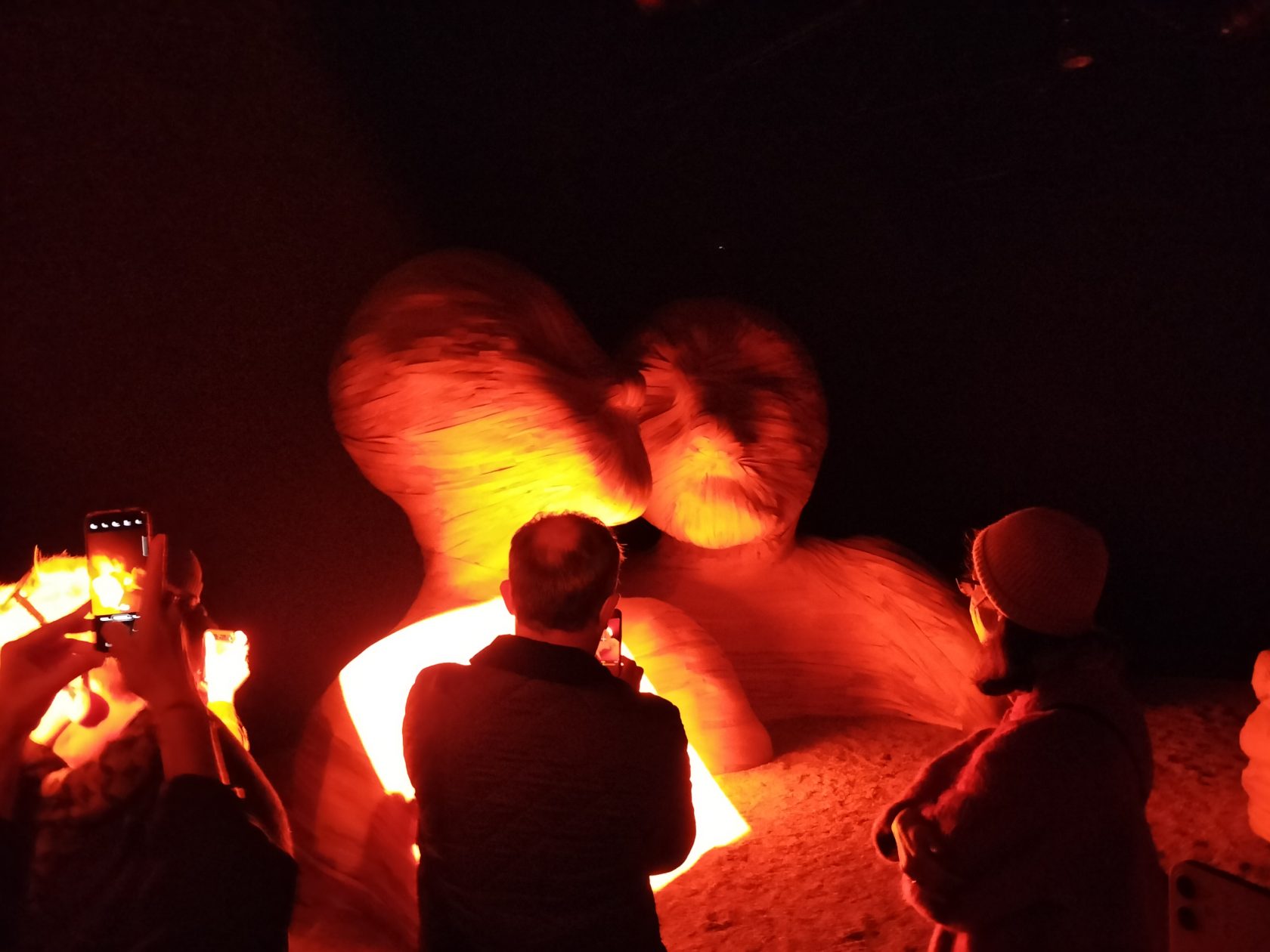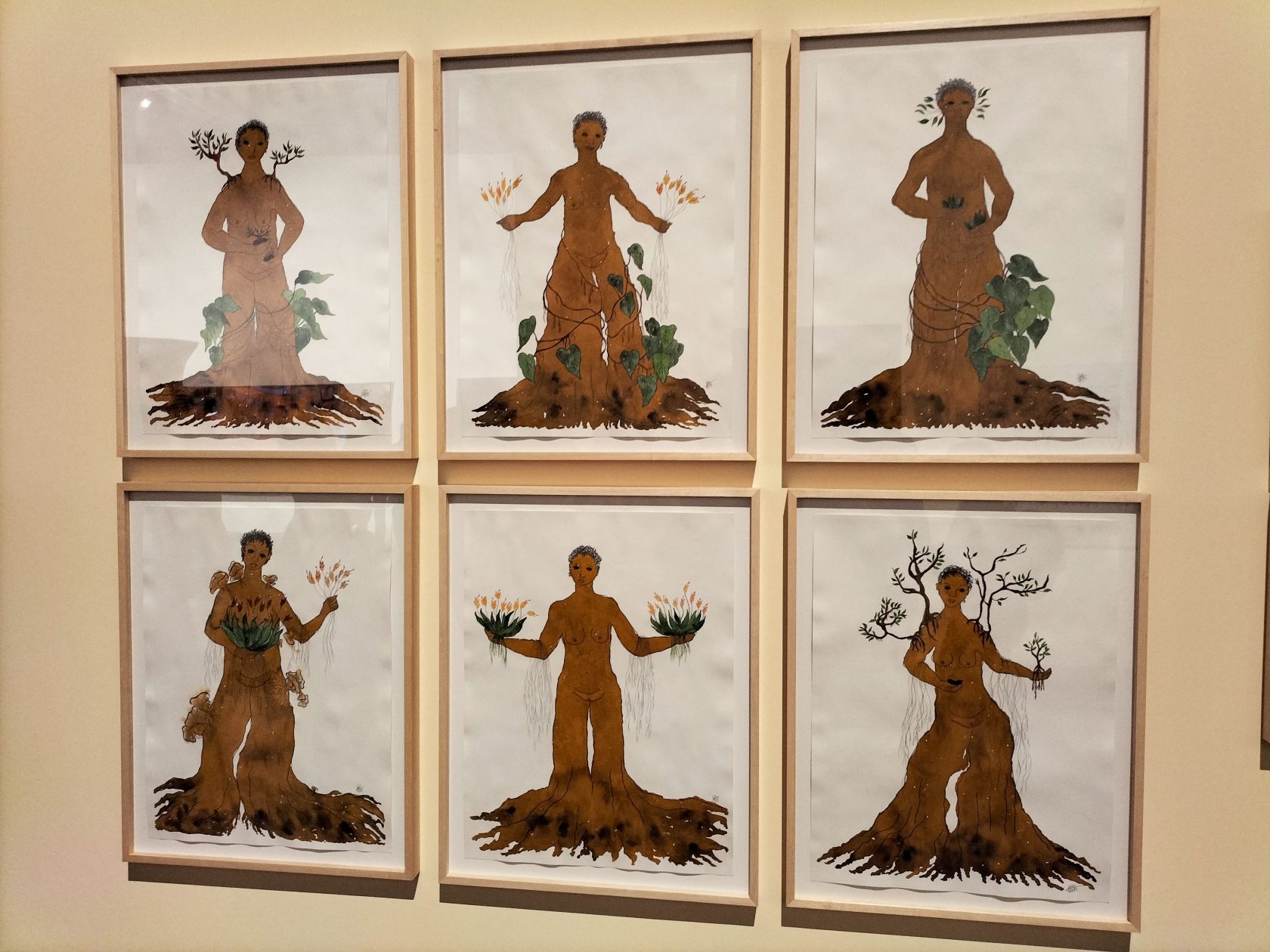Venice Biennale 2022 – The Milk of Dreams
Sisterhood, Symbiosis & the Neue Frau - a touch of feminine among a patriarchy of men
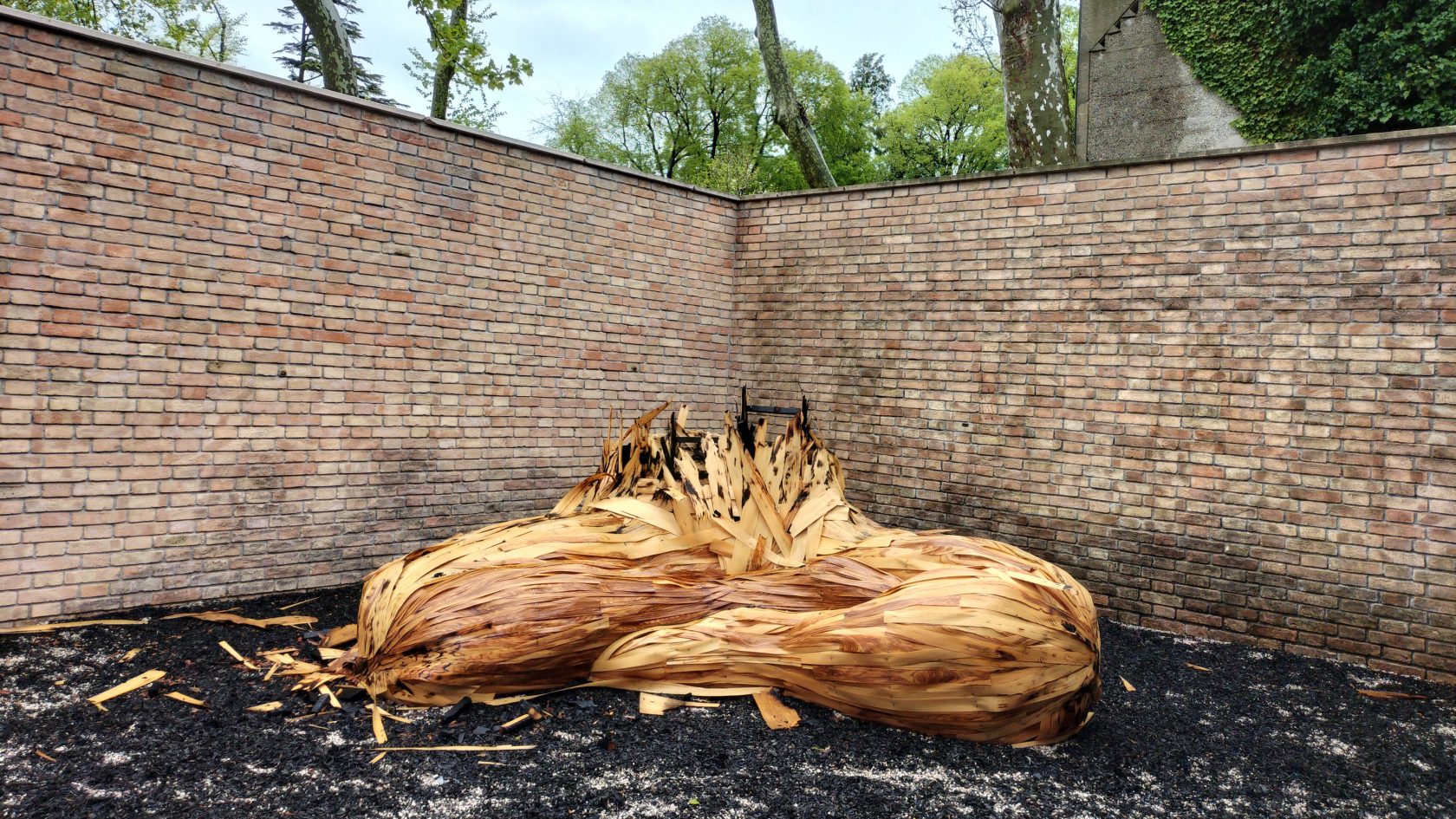
After some years in isolation the Venice Biennale opened again its doors in April 2022 with ‘The Milk of Dreams’ 1 international Art Exhibition curated by Cecilia Alemani, Director and Chief Curator of the Highline Art in New York, the first Italian woman to curate the Biennale who was also curator of the Italian Pavilion in 2017. The circumstances for such a happening were not ideal, with the ongoing tensions of the Russo-Ukrainian war and the pandemic just behind us, yet the show must go on.
The curated part of the show featured a whole 85% of female artists, a large selection of which was welcomingly historic. Alemani writes: “As the first Italian woman to hold this position, I intend to give voice to artists to create unique projects that reflect their visions and our society”
The beating heart of the curated part was without a doubt ‘The Witches Cradle’. A show within a show, a densely historic retrospective of outsider wild women, who mostly had to operate clandestinely, nested right in the center of the Central Pavilion of the Giardini oozing witchcraft. Condensed to one room it consisted of a rich library of collected paintings and artifacts behind vitrines, carpeted, historically moist, as one would expect behind the closed doors of the libraries of the biggest institutions, a certain element of voyeurism played in. An over-saturation albeit a good one if bold, gender questioning non-conformist women and all those in-between are your kind of thing; a feeling of being in the presence of true jewels forgotten by history here undusted, rediscovered, authenticated.
The wall text read:
“In the first half of the 20th century, the enlightenment concept of the self as a contained unitary body was blown wide open by the emergence of technologies that blurred the distinction between human and machine, by psychoanalytic models that illuminated the influence of the unconscious, and by the feminist ideal of the independent and autonomous Neue Frau (New Woman). This shift undermined longstanding and pervasive dualisms between human and nature, the animate and the inanimate, mind and body, and female and male in favor of hybridity and relationality.
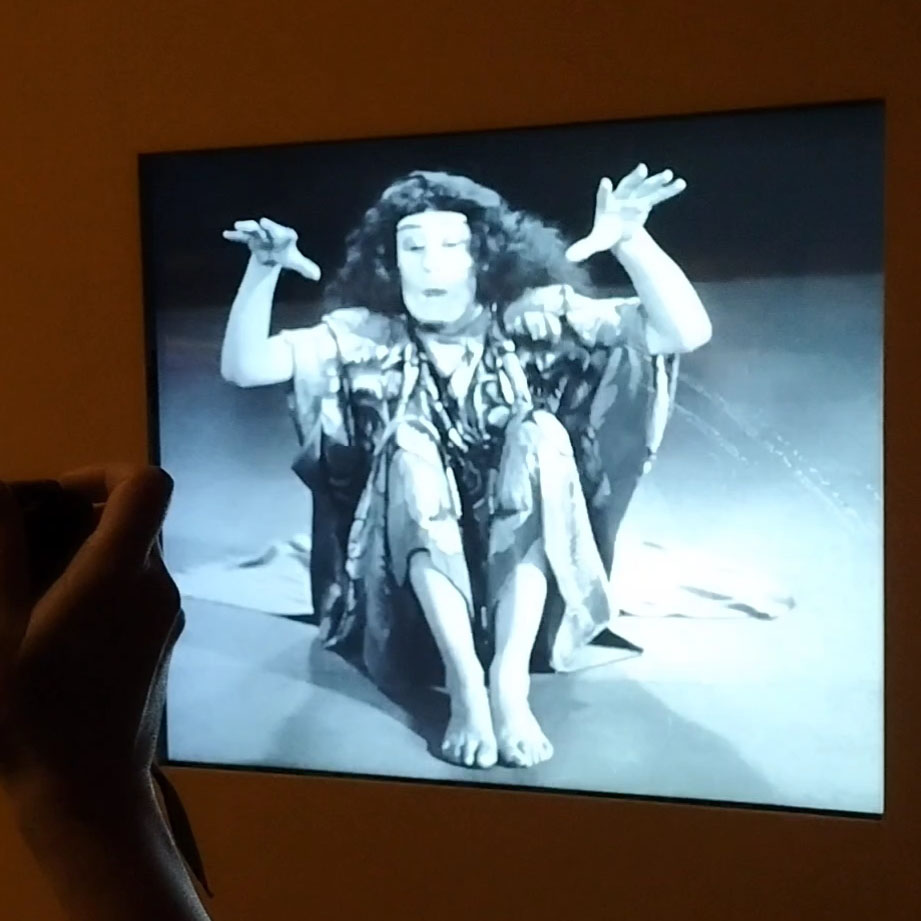
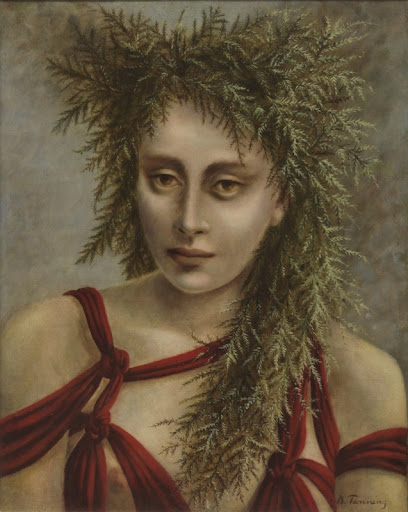
One could spend hours here mulling over artifacts unearthed after a long slumber but the pace of the Biennale, especially during opening week, did not allow it. Run. I ran, thoroughly agitated that my time and the time this kind of art archive demands were heavily at odds with each other. However, I managed to collect the following: Mary Wigman’s ‘Hexentanz’, spellbinding video archive of a woman possessed in frenzy, student of Rudolf von Laban, the father of ‘expressionist dance’, Maya Deren was there, Dorothea Tanning’s ‘Deirdre’ and Leonora Carrington’s haunting oeuvre were among some of those unearthed treasures (I must admit like a devout pilgrim I did return to the Witches Cradle daily when time permitted to get my fix).
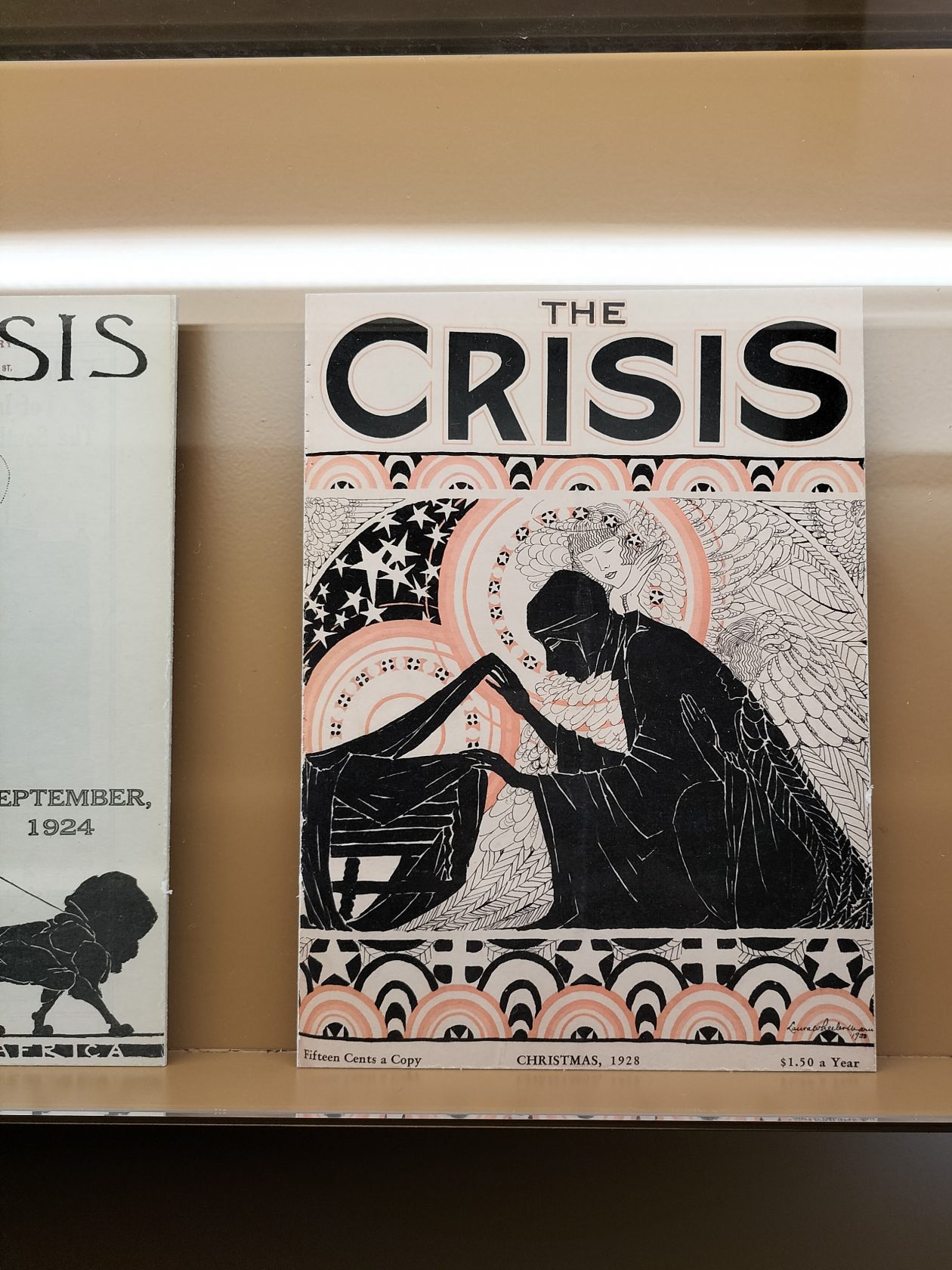

Female art history permeated all parts of the Central Pavilion – saturated paintings of Chilean Cecilia Vicuna (1948), poster girl for the Biennale campaign populated the walls with Bedigame Mamita (1977) and Llaverito (Blue) (1979) which Vicuna describes as “a liberated Blue Lady in her dual aspect as key holder and crab at once.”2 There is something reassuring about work which registers opinions and values of the time registered in the accepted medium of the time, maybe because it’s a known and accepted medium – painting, and we’ve had time to accept it.
Other parts featured darker and more experimental registrations on the theme; Polish artist Aneta Grzeszykowska’s Mama series (2018) featured eerie black and white photographs of her young daughter carrying and caring for a corpse-like sculpture of the artist’s torso which the artist modeled on herself. The work, which explored relationships between object and fetish, mother and daughter, was reminiscent of Hans Bellmer’s human-like “poupees”of the 1930s, artificial girls with multiple anatomical possibilities, uncannily alive. As one went deeper into the depths of the Central womb, the wall colors turned navy blue and things got darker, one found oneself face to face with cannibalism, masochism, sadism, slavery. Paintings depicting fetishes and mutilations, wax sculptures, life-like of artist unknown depicting a mother feasting on her babies. (My own mother who accompanied me was horrified at this scene, I on the other hand rather enjoyed the darkness). In another room Danish artist Sidsel Meineche Hansen in collaboration with filmmaker Therese Henningsen presented the world of women in toy porn. In Maintenancer (2018) a German brothel keeperness details in a very matter of fact tone about the day to day maintenance of sex dolls at her doll brothel; what needs to be done, how they need to be kept and preserved in order to continue a successful business, business as usual.

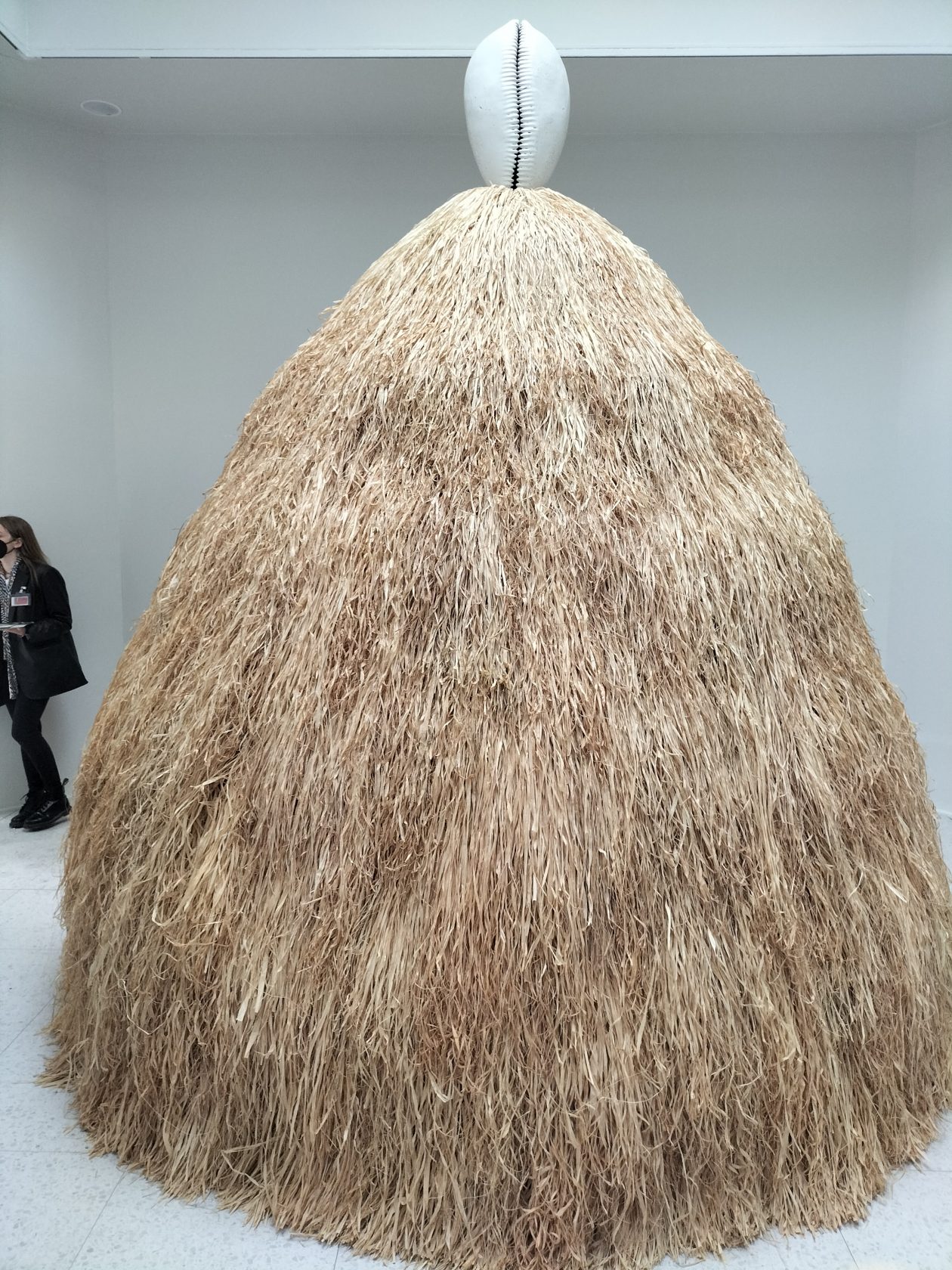
As one returned back to the outskirts and the exit of the Pavilion, walls got lighter and things more subdued in tone, a younger generation represented a more abstract and chilled version of things. Hannah Levy’s (1991) evasive anthropomorphic sculptures, airy and machine looking, embodied forms of things devoid of content. There was also something reassuring about them, perhaps because they were devoid of content; not heavy, suggestive, a pleasurable observation of combinations of materials, nuances, no agendas, pure sculpture.
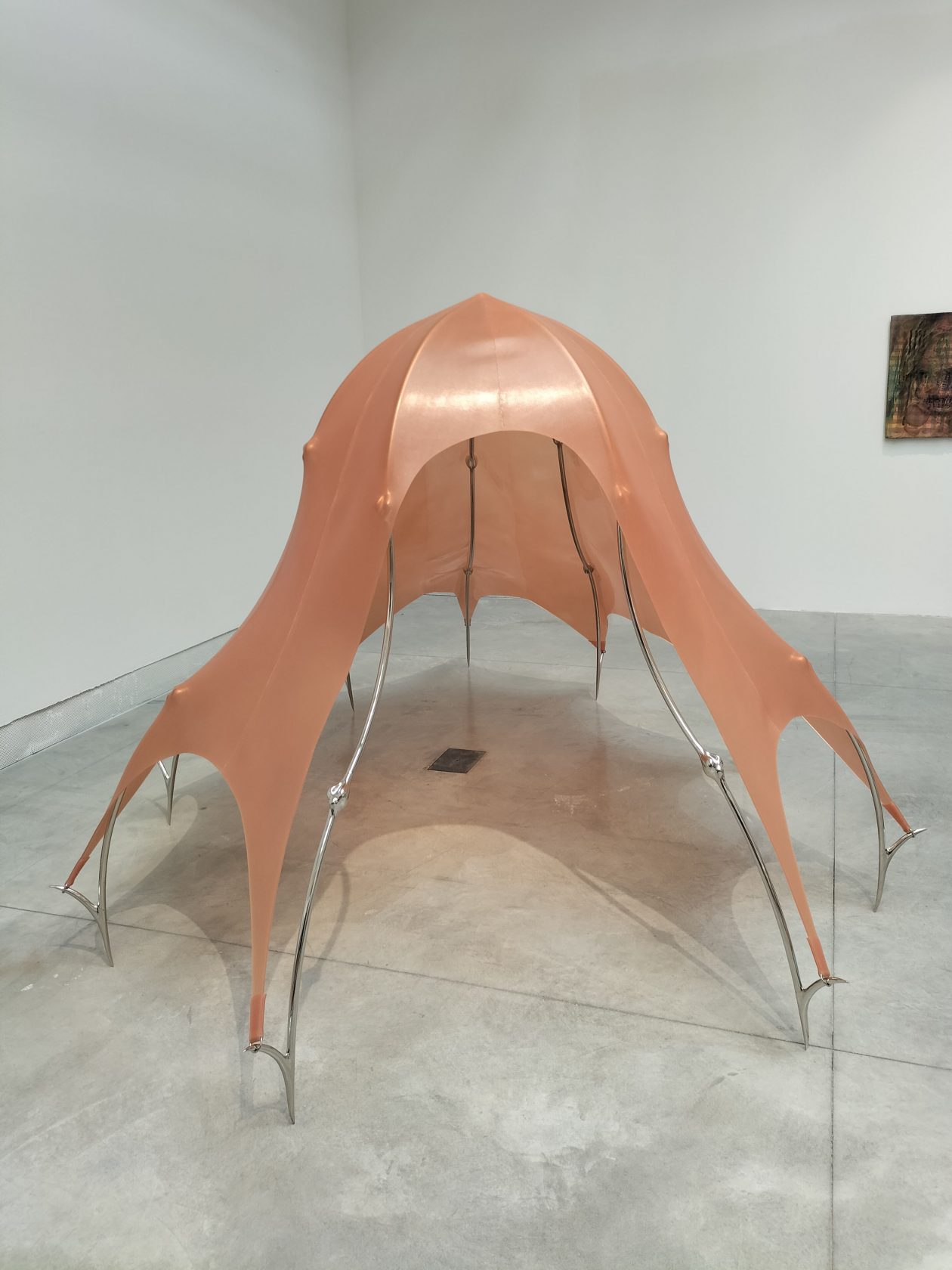
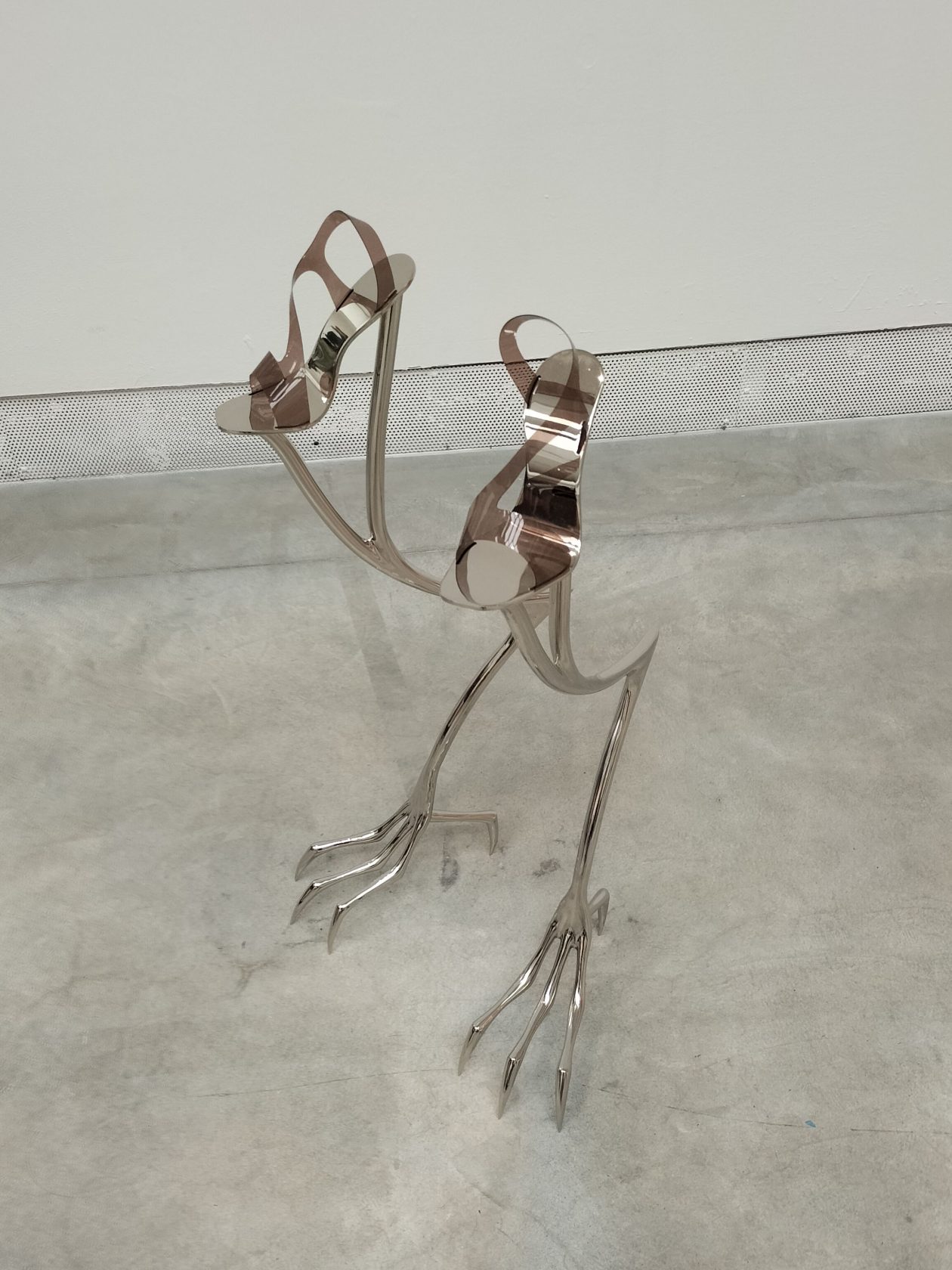
Julia Philips (1985) presented some more technologically intricate works, ready mades in different associations, what attracted was the titles she chose for her pieces, serving as registries for potential actions: Manipulator, Protector, Muter, Extruder, Mediator, Negotiator, Distancer as well as anthropomorphising the works further, they also rendered their phantom presence.
Outside the curated part, like a veil shrouded, dark, sincere, bodily, some pavilions followed the logic of the heavily feminine. The Hungarian Pavilion featured the work of Zsófia Keresztes (1985), voluptuous sculptures on wheels, attached together by chains in a sedative mentally anesthetizing environment reminiscent of a swimming pool which was pleasant for the senses. Ceramic water drops made out of multitudes of small mosaic tiles, a naive playful childlike approach yet enchanting, here it felt as if the artist was allowed to do what she felt, a certain sense of comfort not going for trends, not trying to pretend to be someone else but just being and releasing fantasies. In the US pavilion the tone was similar with Afro-American artist Simone Leigh’s (1967) primordial sculptures inspired by early Egyptian terracotta pottery and 19th-century African American face jugs. Yet, the naivety here was just too stated, in a pavilion such as that of the USA to call this curatorial choice avoidant would be an understatement.
The Austrian pavilion, on the other hand, was perhaps just literally too OTT. In ‘Invitation of the Soft Machine and Her Angry Body Parts’ artists Jakob Lena Knebl and Ashley Hans Scheirl featured grotesque bubbly sculptures of not very friendly looking plastic creature women. Parading body parts unashamedly dissected, such boldness and literality of action may have worked in the 80s but now it just felt like it was too much, a bit too much plastic also, Perhaps we have moved on, in our current overabundance of things, seeking more calm and cooling waters, yet it seems that nationally things have not moved on since Hermann Nitsch in Austria.
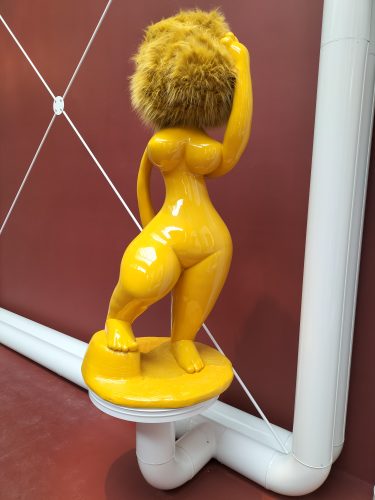
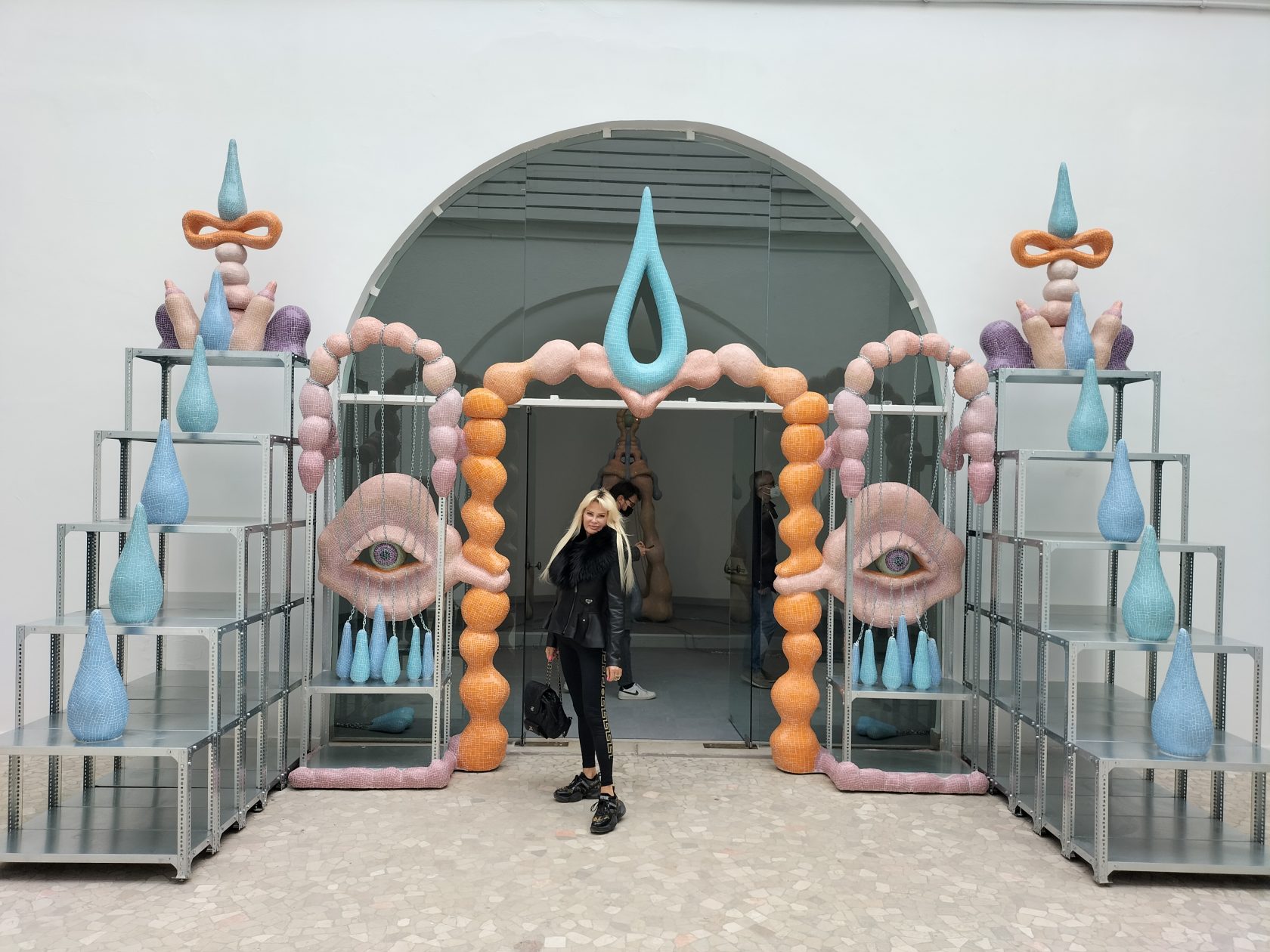
The Swiss one was my favorite in this conglomeration; a half burnt totemic mother goddess reigned, this pavilion attracted by its bright orange flickering tones emanating primordial audio visuals and smells of fire, ash and earth. The light display accentuated silhouettes of dark totemic sculptures within the cave pavilion entrails which called itself ‘The Concert’ by Moroccan-French Swiss-based artist Latifa Echakhch (1974). There was something of an initiatory feeling here, again not obvious or pre-set, just somewhere in the cracks, the dark or in the lingering smell of something having recently burnt down. The fact that I also missed the concert, performed at another location in the center of town on the Friday amidst a plethora of same-timed events most needing to be vaporettoed too, was just too much, but the mystery of what would have been endured.
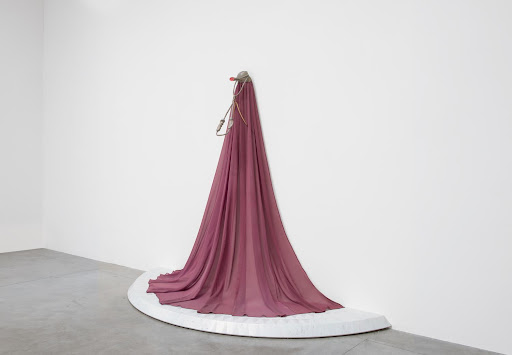
There were of course those who still stuck heavily to conceptualism, but they were in a severe minority – Spain and Germany. Somehow amidst the reigning softness and earthy ambiguity of the main approach, conceptualism seemed out of place, silly, even outdated maybe. Playing tricks on the mind (or architecture) seemed suddenly a thing of the past, it seemed audiences wanted to relate, to feel touched, also interesting how quickly something feels out of place when not belonging to the predominant order.
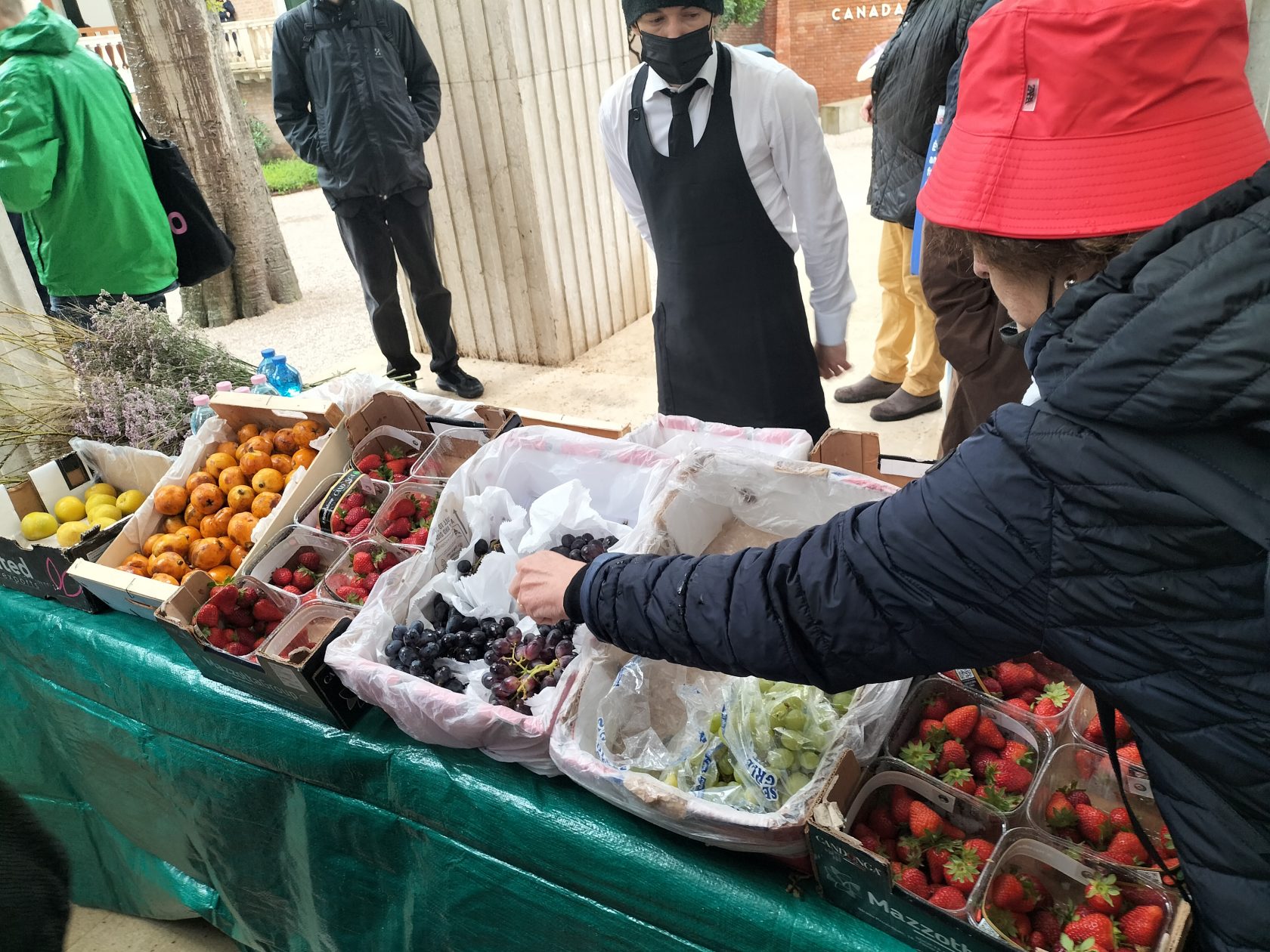
In true calvinist tradition Germany chose to abstain from representation completely, maybe paralyzed by a resurfacing feeling of guilt or that unbearable burden to have to act radically yet in line with your comrades, their pavilion featured nothing but a few carved out brick walls in selected places. At least at the opening there was ‘Obst & Gemuse’, a fruit stand that provided some color, symbol for an abundantly colorful migrant population? Whatever the approach, much needed vitamins were provided and the down to earthiness of it invited.

And finally we come to play. There were those who took matters more lightly. In Belgium, represented by Francis Alÿs, a big pink plastic ball greeted one as one entered the space. It is a happy choice to choose to abstract oneself into the carefree world of children, and also a skill as Picasso would agree3, however not all went without their cynicism and critique. The Pavilion got much critique even by one of its own commissioners which is maybe more a reflection on our society’s current mindset (and readiness to pigeonhole into conventional boxes of right and wrong), especially of another’s work. If you know the work of Francis Alÿs however, you would probably not come to such a conclusion, but perhaps this is a question more to the artist himself which I was alas unable to ask despite waiting for over 20 mins while he chatted to the Important Sponsors. As they departed I made my leap only to be blocked by an army of female curators who literally placed their arms like swords criss-crossing Francis out of sight and told me ‘Francis has 8,000 appointments that day, please leave your question in the guest book, he will definitely read it’. Just like in the supermarket where computers have replaced people I did not wish to participate in this operation, perhaps I will have the chance to ask Francis this question again sometime, perhaps on a playground somewhere.
But what was the problem? In ‘The Nature of the Game’ Francis filled the Pavilion with videos of children’s games, which he filmed around the world, setting himself the anthropological task of collecting local games from various countries of the globe. The criticism? Exploitation of ‘coloured kids / minorities’ on camera. I did not see this with my eyes but perhaps I am the naive one and ‘should know better’. Still I was mostly just immediately transported into the children’s world, an idea I found quite beautiful, so the work must have worked. I do hope to one day speak to Francis about this more honestly. I don’t think his curators understood the work.
Outside of nationality (hierarchy and power) there was a lot of water. Aside from the public program which I guest curated as part of the WE ARE OCEAN Global Program, a week long series of talks and events dedicated to artists working site specifically around the world with water to raise awareness about our interdependence with the Ocean 2019 – 2030 initiated by Artport Making Waves at the Institute of Marine Research housed in the Palazzina Cannonica between the Arsenale and the Giardini, the two main Biennale sites there was also ‘Walking with Water’ by Vladimir Nikolić in the Serbian Pavilion. A meditative and witty reflection on painting, Nikolić, a swimmer himself presented two digital paintings; one horizontal, one vertical, one of the sea, one of him swimming lengths. This simple set up, atmospheric and space-giving made one want to return. At the Ocean Space rented by TBA 21 Academy in the beautiful Chiesa di San Lorenzo more towards the center the show of Diana Policarpo ‘The Soul Expanding Ocean #4’ was also very atmospheric, precisely because there was also not much there. The incredible architecture of the majestic church definitely added to this experience. (If I am to curate a show in Venice, I would definitely do it in a church.) The work of Diana Policarpo (1986), also which was one of the first I saw while carrying chairs from their space to ours, is one of the few video works I actually really enjoyed. In her video documentary she shot on Savage Islands, a small Portuguese archipelago in the North Atlantic Ocean, Diana features the voice of the microorganisms of the sea which have formed part of myths since ancient times and storytelling. They speak of Atlantis, of knowledge buried deep, pre-known, a nostalgia to return to this primordial whole. And of course let’s not forget, Venice is surrounded by water.

Unfortunately I did not make it to melanie bonajo’s ‘When the body says Yes’ at the Dutch Pavilion, which was also luckily in another church. During the Opening we had to wait just way too long, my thirst for free alcohol and snacks took over, how they spoil you and then expect you to submit. Make entry as easy as possible, if you want your customers to stay. Alas I also did not make it to the raunchy Dutch after party where everyone apparently took off items of clothes on the dancefloor, instead being heart broken in an empty apartment room while heavy rain poured downwards outside, perhaps more the aesthetic experience I longed for, instead of being in an oversaturated epicenter in the overabundance of people and things, at least I was warm, and alone.
My favorite work? It’s hard to tell when there is so much going on but definitely Singapore because precisely there was no work, it was a presentation of a book framed by a beautifully arranged space giving space. Curated by Ute Meta Bauer, artist and scholar Shubigi Rao (1975) presented her decade-long project, ‘Pulp: A Short Biography of the Banished Book’ which is about the history of book destruction and the future of knowledge. But to escape the loudness of things on Sunday before the masquerade began my colleague and I took the boat to Lido to the Sea. We walked on its shores in silence, made our wishes known and gently listened to her goddess, perhaps she is the Neue Frau we are all searching for.
Side note:
Ironically, outside the Biennale walls, men shows paraded their masculinity with Bruce Nauman retrospecting at Francois Pinault and Anselm Kiefer occupying Palazzo Ducale. Did they feel ostracized? That was apparently the talk of the town during opening week at most of the most important parties, I heard.
Notes
1 Title borrowed from a book by Leonora Carrington.
2 “I painted the original Llaverito in Bogota, circa 1977. It was a tiny painting that now lives somewhere in Chile, in a relative’s home. I missed having her around so I painted her in her new station as an old troublemaker. At the time, men in Colombia referred to their women as ‘llaverito” – the key holder to all pleasure and joy. But I remembered well, that in Chile men referred to women as ‘ladilla’, pestering crab that itches and bothers to no end. So I decided to paint the liberated Blue Lady in her dual aspect as key holder and crab at once.” Cecilia Vicuna, New York 2019, accompanying wall text.
3 “It took me four years to paint like Raphael, but a lifetime to paint like a child.” Pablo Picasso.
4 The center of Venice is filled with lamp posts the glass of which is tainted pink. Rumor has it that this was a site-specific work of art commissioned by the City of Venice already in the 1960s, but internet research leads to no names. When I consulted my local colleagues, students of the Ca’ Foscari University in Art History, they told me that it is not an artwork but simply how the city commissioned the lamposts. Still varying stories exist, and they are beautiful the more so in their public service and anonymity..
